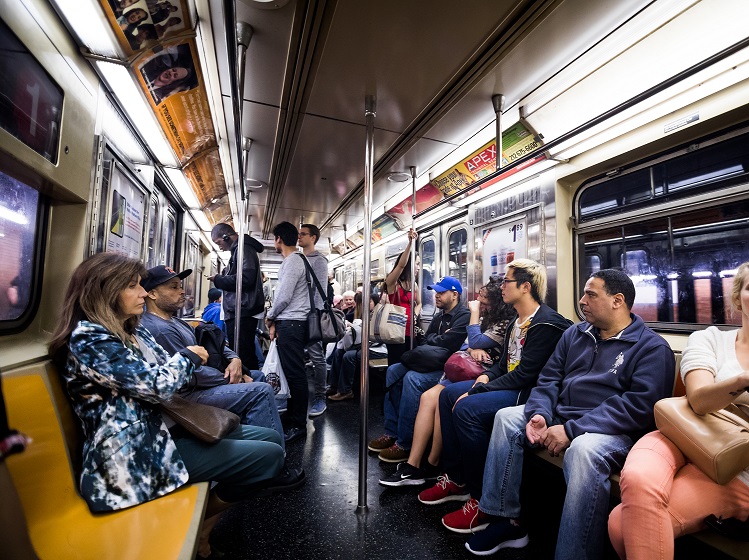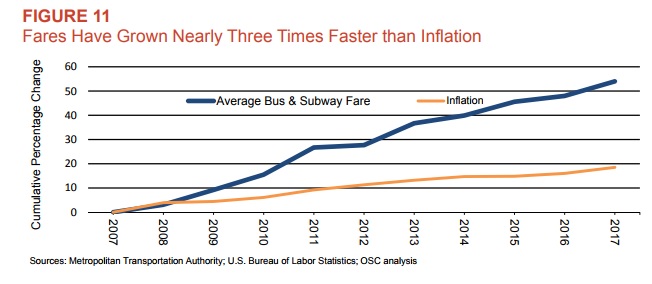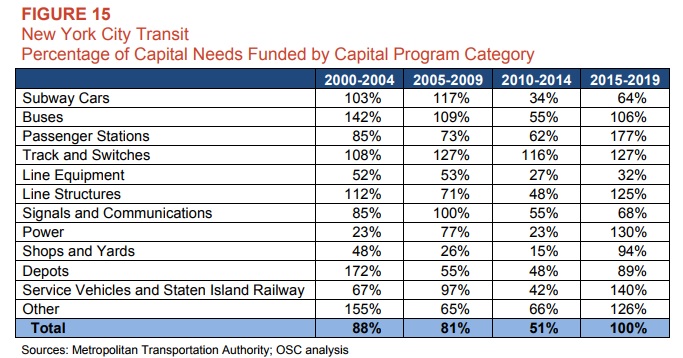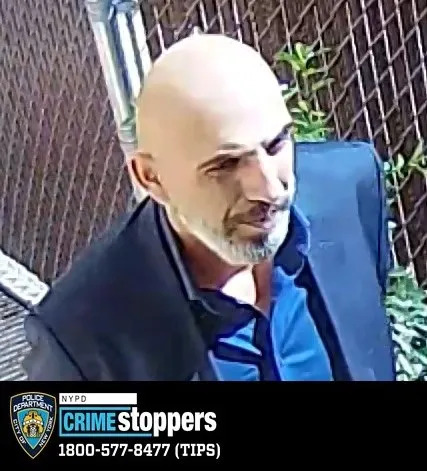A study by State Comptroller Thomas P. DiNapoli found that the MTA may not have enough money to implement subway improvements without raising fares earlier than expected.
The report, titled “Financial Outlook for the Metropolitan Transportation Authority,” was released on Nov. 9 and analyzed the MTA’s Subway Action Plan, performance measures, the 2015-2019 and 2020-2024 capital programs and the agency’s current operating budget.
Though ridership continues to grow on the subway and Long Island Rail Road, performance has worsened, the report found. Ridership on the LIRR reached 89.4 million riders in 2016, the highest level since 1949, but on-time performance in the first half of 2017 was the worst it’s been in 17 years.
On time performance for subways has also fallen. The average distance trains travel before breaking down was 112,000 miles in 2016, the shortest distance since 2001. The MTA attributed almost 40 percent of the delays to overcrowding and more than 28 percent to track and signal issues.
Between 2007 and 2017, the MTA has raised fares by 54 percent, almost three times faster than the inflation rate. The report points out that fares were raised during the recession, when families found it harder to afford the hikes.
This wasn’t always the case. Between 1996 through 2007, the agency raised fares and tolls by less than the inflation rate and the 4 percent scheduled increases in 2019 and 2021 are less than the projected 9 percent increase in inflation rate over the four years.
The MTA has invested more than $120 billion for improvements through its capital program, which began in 1982, but with the repairs needed to signals, stations, pumps, emergency ventilation equipment and more, the pace of funding is not keeping up with need, the report found.
The Subway Action Plan, announced by recently appointed MTA Chairman Joe Lhota, will allocate $836 million in its first phase to stabilize the MTA system. The $8 billion second phase will modernize the system and funding is included in the 2020-2024 capital program.
Though the MTA announced that it wants to complete phase 1 by 2018 and would prefer that the city and state split the costs, an agreement by the mayor and governor has not been reached. Instead, the MTA has been using its reserves to pay for the first phase.
In his report, DiNapoli points out that the MTA has not explained how it will fund the cost of increased subway maintenance after the first phase is completed and state and city funds dry up. The report estimates that the recurring costs of maintenance could reach more than $300 million annually, which is the equivalent of a 4 percent fair hike.
The report also pointed out that the 2015-2019 capital program had a $15 billion funding gap when it was first proposed. It took 17 months before the state, the city and the MTA could agree on a funding formula to close the gap, delaying a number of projects.
Though the state has said it would contribute $8 billion to the capital program, Cuomo has not identified where $7.3 billion of that money would come from. Currently, the MTA is contributing 43 percent of the funds to the 2015-2019 capital program, which is adding to the agency’s debt.
Debt and other operating resources used to fund the capital program will increase by 22 percent to $3.5 billion in the next five years, which will eat up one-fifth of the agency’s revenue. By 2022, debt is projected to increase to $42.6 billion.
DiNapoli also said that the MTA is expecting the federal government to pay for almost one-quarter of its capital program but the current administration has announced it may cut some crucial funds. President Donald Trump has said he wants to eliminate the New Starts program, which would fund $2 billion of the second phase.
By 2021, the MTA predicts budget gaps of $493 million even though there are scheduled four percent toll and fare increases in 2019 and 2021. The estimated gaps will only be proven true if the MTA experiences $1.4 billion in unidentified cost savings, uninterrupted economic growth and the state restoration of $65 million in yearly funding to offset the MTA’s revenue loss due to a reduction in the Payroll Mobility Tax.
With budget shortfalls, critical repairs and maintenance fall through the cracks. According to the report, requests made by NYC Transit for equipment such as ventilation plants, which allow the MTA to mechanically vent smoke and fumes away from subway tunnels, cannot be made.
A total of 183 of the underground subway tunnel segments do not have emergency ventilation plants and while 118 segments were built with chambers for the equipment, the plants were not installed during construction. In addition, 83 tunnel segments do have ventilation equipment that do not meet modern safety standards.
“Without additional assistance from its traditional funding partners, the MTA will have to raise fares and tolls faster than already planned to maintain, modernize and expand the system,” the report read.
Lhota denied that the agency would have to increase fares sooner than expected.
“The MTA needs a steady income stream to continue to maintain a state-of-good repair while at the same time upgrade and expand the system,” he said in a statement. “We are extremely encouraged by the growing support for congestion pricing and we categorically reject the idea of any unplanned fare increases. Funding subway repairs will not come on the backs of riders and the comptroller is fear-mongering by injecting unplanned fare increases into the public discourse.”
To view the full report, click here.





































